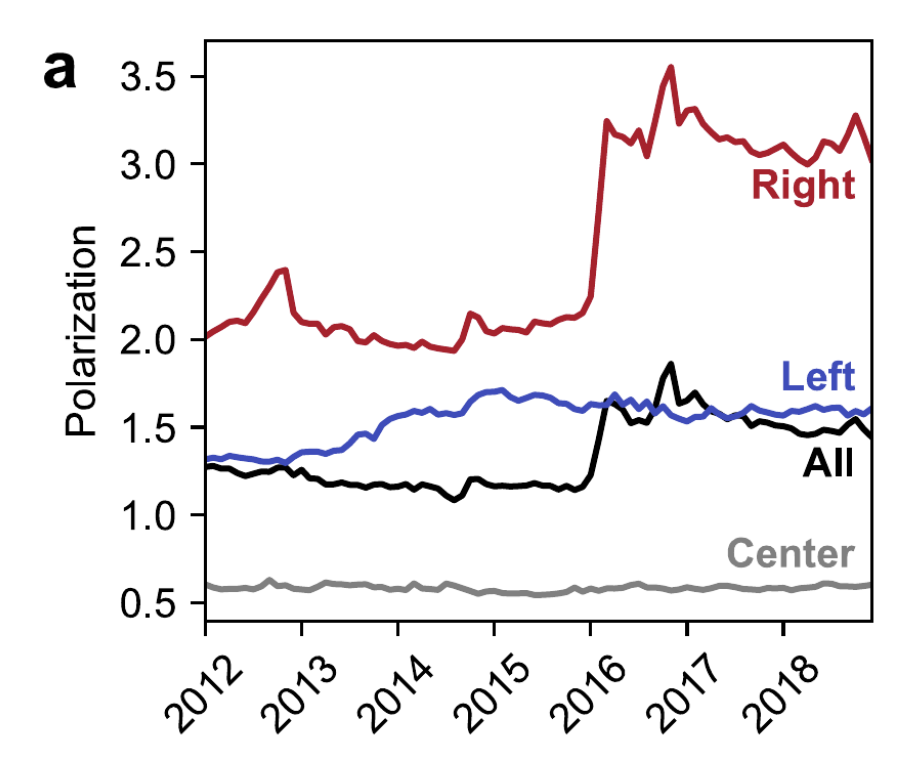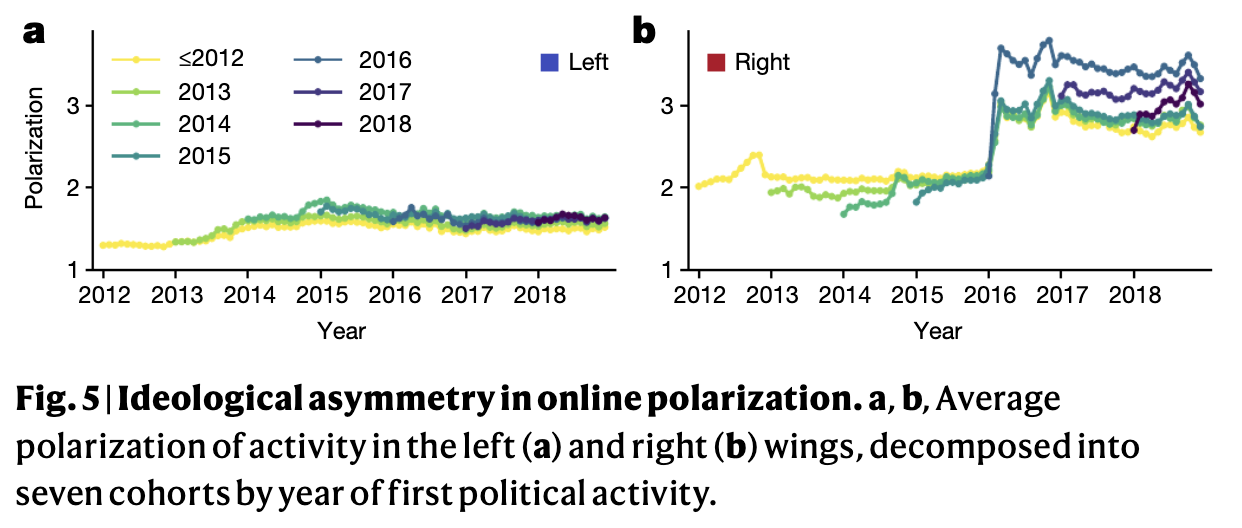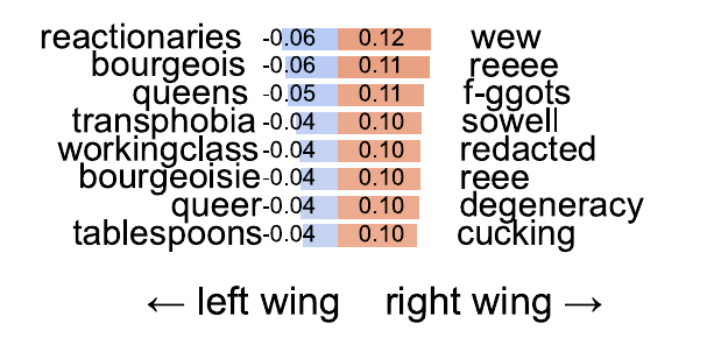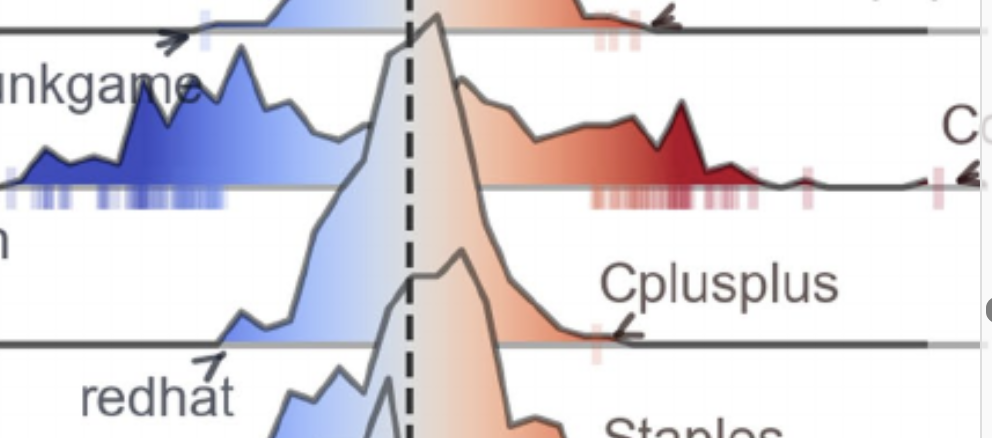(this paper is long)
- The rise of social media platforms led to “increasing interconnectivity” and also “social fragmentation” because people can more easily join like-minded communities
- These are essentially a sort of homogeneous echo chambers, and they potentially shift users towards ideological extremes
- This paper aims to answer these questions, and they begin by representing similarities in community memberships as relationships between vectors in a high-dimensional space
- Questions:
- “To what extent does platform-level political polarization change over time?”
- “Do individual users become more polarized in their political activity over time, and do these changes rive platform-level polarization?”
- “Are the dynamics of polarization ideologically symmetric?”
- Methodology:
- This paper avoids the biases of self-reported data, expert labels and survey-based methods by purely using behavioural metrics for calculating placements of communities in embedding space
- Essentially, communities are similar if their user bases are similar rather than through the content of posts in the community itself
- The largest 10,006 communities were embedded into a 150-dimensional space
- Used hierarchial clustering to identify the primary similarities and differences in membership activity
- Fit every subreddit into social dimensions of age, gender, and partisan axes
- Questions:
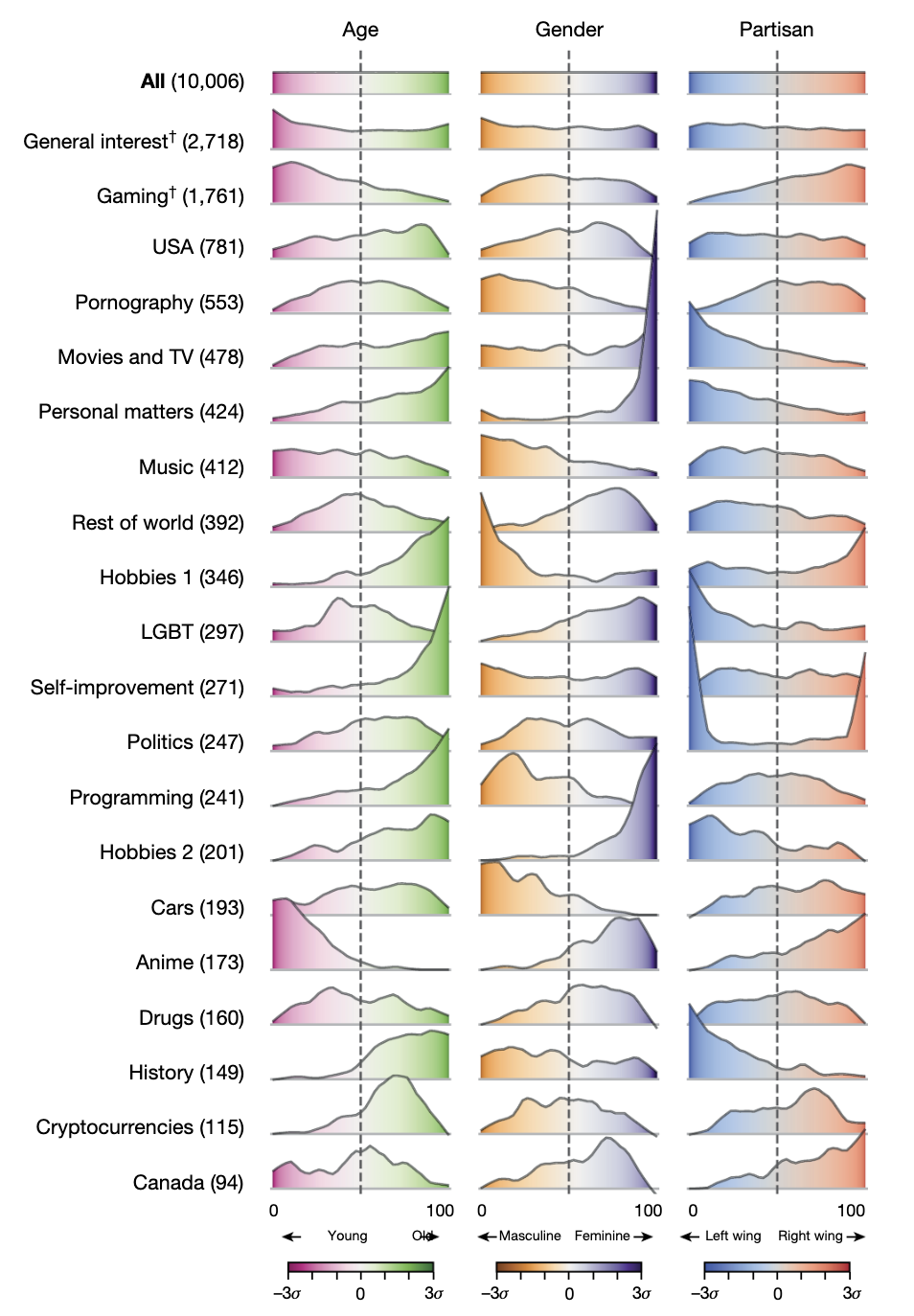
- To my surprise, older communities skew towards the left-wing pole, and younger communities skew towards the right-wing pole. Apparently, while this isn’t true in offline contexts, it is consistent with the previous surveys of online youth (alt-right movement).
- Another interesting analysis is the following fact:
- “In line with the echo chamber hypothesis, the political activity contributed by a community’s members is heavily skewed towards communities with similar partisan scores. For example, only 8% of political discussion occurs in the most left-wing communities, but among users who contribute to left-wing communities, an average of 44% of their activity takes place in left-wing communities. Similarly, only 16% of political discussion occurs in the most right-wing communities, but right-wing communities account for on average 62% of right-wing commenters’ political activity.”
- Evidently, people who are active in these extremist communities spend most of their time in these communities ~ which makes sense I suppose.
- “Furthermore, a cohort’s increase in polarization was directly related to its age, with newer cohorts polarizing more than older cohorts”
- Some interesting observations:
